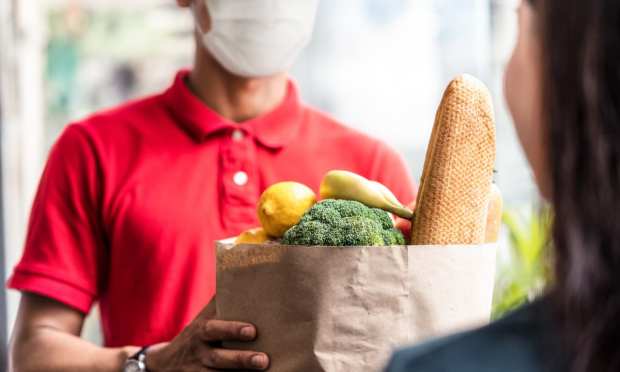Uber Eats Exec Heads To Instacart As Delivery Sector Heats Up

On Monday (March 8), Uber Eats’ former head of product Daniel Danker announced via Twitter he has left the company to join Instacart as vice president of shopper and fulfillment, days after The Information initially broke the news. The news comes as Instacart is looking to go public via direct listing, raising hundreds of millions in funding to reach its $39 billion valuation.
“Today I’m joining @Instacart as VP of Shopper & Fulfillment. Instacart makes daily experiences more convenient while enabling 500k people to earn on their own terms. I’m excited to join the amazing team @ApoorvaMehta has built and work with an incredible leader like @AshaSharma,” said Danker in his tweeted statement, mis-tagging Instacart Founder/CEO Apoorva Mehta (@apoorva_mehta) and COO Asha Sharma, who does not have a public Twitter account.
In the time Danker was head of product, Uber Eats launched its food delivery service for business and rolled out corporate meal vouchers, added in-restaurant contactless payments and acquired alcohol delivery service Drizly. Meanwhile, the delivery service also shut down in eight countries.
“We’re grateful to Daniel for helping to accelerate Uber’s delivery product over the last year, and wish him all of the best with his next adventure,” an Uber spokesperson said in a statement to Restaurant Dive. “To offer a more deeply integrated consumer experience across our mobility and delivery platform, we are taking the opportunity to reorganize our product teams to reflect that.”
The move begs the question — to what extent are the skills transferrable? As customer adoption of remote food delivery services has rapidly accelerated in the last 12 months, meal and grocery delivery services have had the opportunity to build up their user bases as the delivery space grows increasingly competitive. While both grocery and restaurant delivery services are racing to offer the most convenient and most affordable options without amassing huge losses, the means by which they achieve these ends can be quite different.
In grocery, independent grocers and the third-party delivery providers they must use if they cannot afford their own drivers compete against the fulfillment infrastructure of retail giants like Walmart and Amazon. In the PYMNTS January Whole Paycheck report, researchers found that the former accounts for almost a fifth of total food and beverage spending, and though the superstore chain has partnered with Instacart in select locations, the majority of these deliveries come through Walmart’s own delivery networks. The latest innovations in the grocery delivery space tend to involve minimizing labor, piloting robotic deliveries and developing microfulfillment networks. Where once grocery delivery was expected to take at least a day, now consumers who have grown used to the immediacy of restaurant delivery services look for faster fulfillment times, and grocery delivery services tout same-day or even same-hour services.
Meanwhile, innovations in the restaurant aggregator space tend to involve diversifying into areas with more generous margins. After all, a single restaurant order will typically be much smaller than a grocery order, and it will require more immediate delivery. After all, while a two-hour delivery is still considered very fast in the grocery space, it would be unacceptably slow for a restaurant meal delivery. Given the high labor costs associated with the model, top restaurant aggregators are setting themselves apart by branching out, which often involves actually using their network of drivers to enter the grocery delivery space. Uber Eats, for example, has been getting into drink delivery and has been partnering with supermarkets, and DoorDash has also been partnering with supermarkets while developing its own online convenience store.
Read More On Delivery:
- Uber and Klarna Team on New Payment Options for Rides, Deliveries
- Shoppers Seek More Accessible Grocery Options From eCommerce Marketplaces
- UPS Looks to Returns, Big-and-Bulky Deliveries to Boost Shipping Volumes
- Amazon Launches Grocery Subscriptions for Prime and EBT Customers